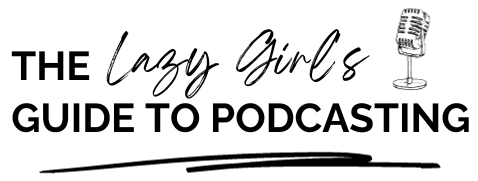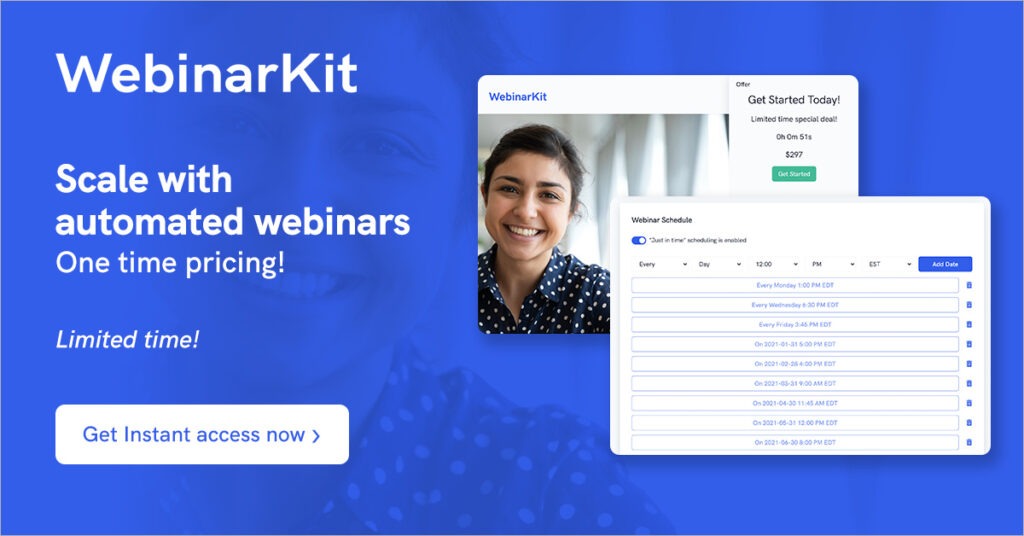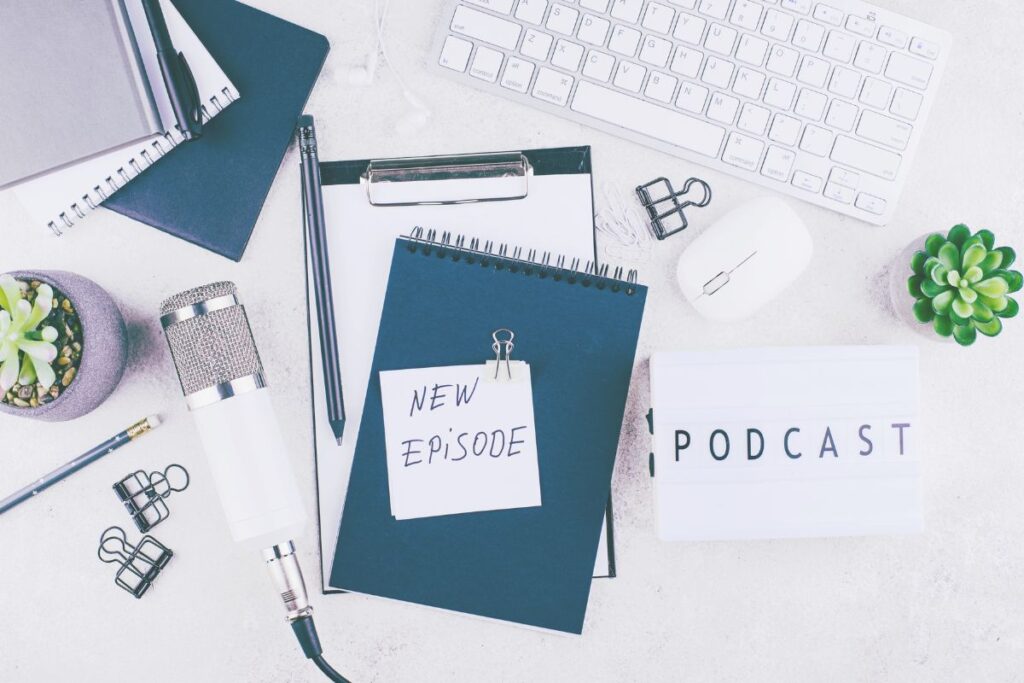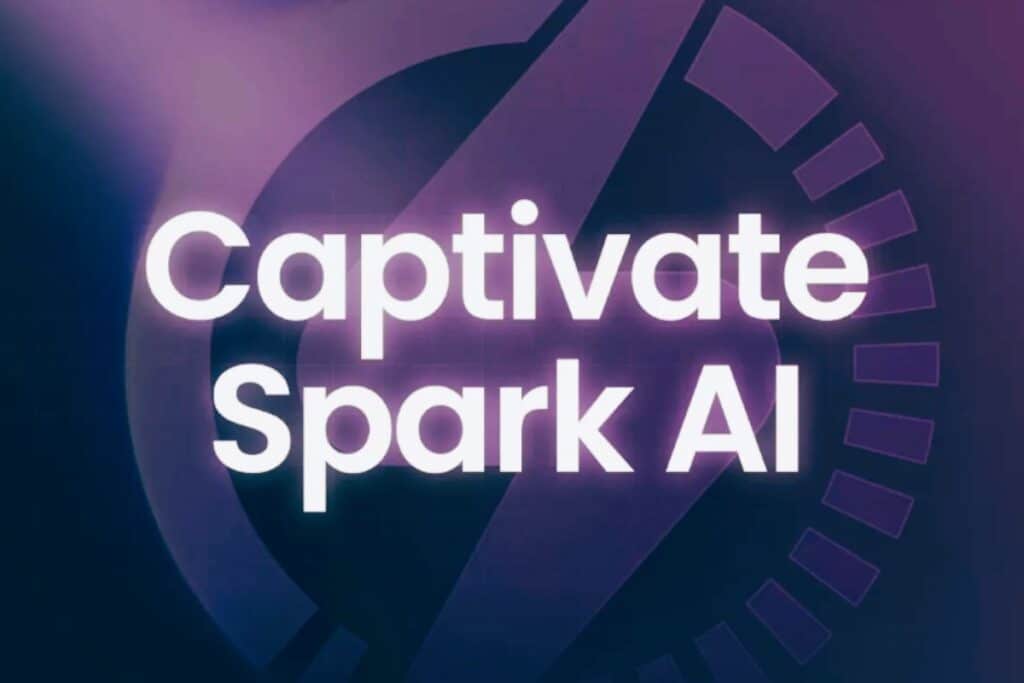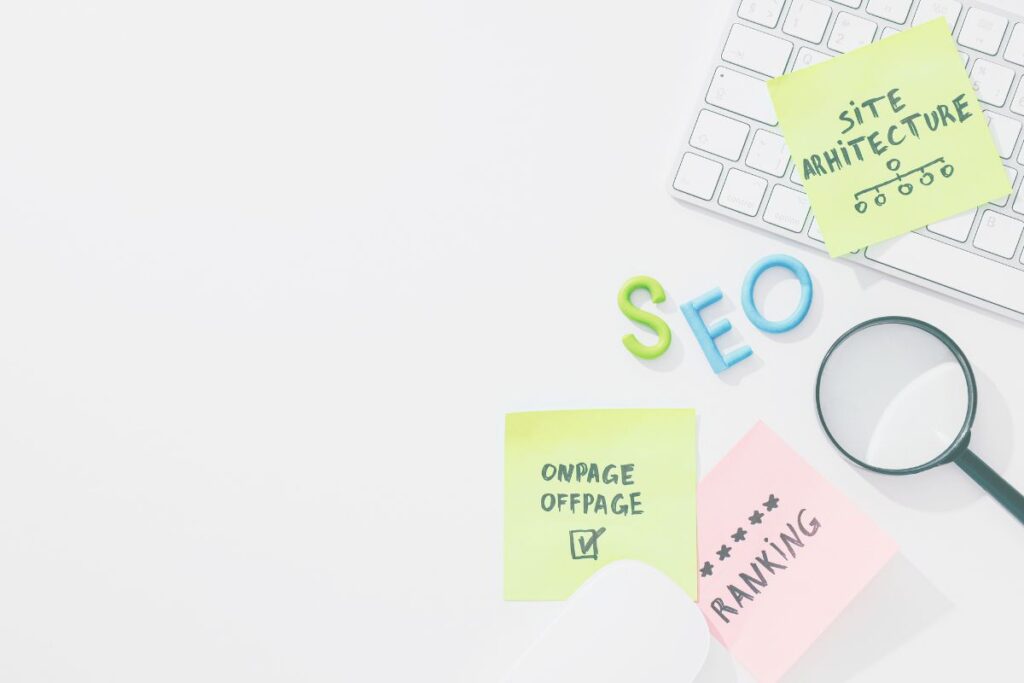Webinars are a great resource to use for sharing your knowledge and establishing your authority on your subject.
It seems as if they are everywhere in the online course world. But what is a webinar? And how can you integrate one into your online course offering today?
What is a webinar? And how does a webinar differ from an online course?
A webinar is an opportunity for you to do virtual training, where you get to share more information about your expertise and present an offer at the end. Webinars are usually offered for free.
And to be very clear, a webinar is not a giant infomercial, you still want to share a lot of value. And you’re usually giving prospects informed decision-making power, you’re teaching about your area of expertise, why you’re the right person how your method works. And then at the end, you’re sharing an obvious call to action to join a programme service or submit an application.
And that’s very different from an online course, or even a workshop where although you may seem that you may see the term like training or workshop used for webinars. Think of a workshop as something virtual that is very action-oriented and very step-by-step. There are clear objectives. People walk away in the end, and they have learned something as opposed to the webinar where your goal is to empower people to make a decision at the end.
When to create a webinar versus an online course
An online course is a paid product and so should always come first. Imagine a funnel almost upside down like a triangle, where the bottom is that offer itself.
Before you get into a webinar it’s a good idea to work with clients and students and get that offer in place, even with a couple of buyers.
Because that validates the demand for the offer itself before you then kind of move one level up in the funnel, which is where the webinar fits in.
The webinar is your opportunity to sell your paid service course, or whatever learning activity it is that people are going to buy from you. And unless you’ve done that groundwork to make sure that the offer itself is profitable, you’re gonna have a hard time figuring out if the webinar didn’t convert, or if your offer won’t sell.
So that’s why it’s a great idea to work backwards. And then once you have that course, that’s even sold a little bit, you can move on to having a webinar as part of your strategy to promote your offer.
The offer
It’s important to think about your offer first. That way, you have a set goal to be working towards.
So, let’s imagine your course at the end. Initial questions are probably already on people’s minds at the beginning. So if they are trying to figure out how to lose weight, for example, what kinds of questions they might be Googling and what are your audience asking that you want your webinar to address?
Naming your webinar
Usually, the name for your webinar is a How-To Statement on how to do something.
And often a popular strategy is to use the word without how to lose weight without counting calories, how to start a podcast without a huge starting audience. If you have that without the clause, you’re not only addressing the main thing they’re looking for, but you’re also kind of enticing them that they don’t have to do the thing that they think they need to do.
A webinar is not a workshop
When leading a webinar, a mistake people often make is to lead the webinar as if it were a workshop.
This means that you give your prospective buyer everything they need. You’re giving them an overview, and clear step-by-step methods to achieve their target and goal. You’re essentially teaching them exactly what they came for.
This is great, but you’re then not giving them a reason to convert as a buyer at the end of the webinar because you’ve already given them everything they need from you.
Essentially, the problem is that you are closing the loop. You’re giving people the answer to their questions, and you aren’t opening the door for them to have more questions.
So before you give your audience information that will help them, talk about why they haven’t reached their goal yet.
And a big reason why is because there are mental blocks or fears or challenges or misconceptions that they have about your area of expertise. And because they believe that those are true, they haven’t started.
An example from Melissa Guller’s podcasting course
“So I’ll give an example from my podcasting masterclass. A lot of people believe that you need a huge audience in order to make money. And most people believe the best way to earn money podcasting is through sponsorship. So in the first section, before I talk about a method, I have to kind of squash those myths. So I talk a little bit about the reality of earning money through sponsorship, and I give exact numbers to talk about how little you can really earn and then I share a mindset shift about how I treat my podcast and how I earn money instead. And so those mindset shifts are actually what’s most important. So when it comes to choosing the topic, the way that you’ll market, your podcast, the title of it is going to be maybe something pretty straightforward about how to do the thing that they really want, without the thing that they really hate. But the webinar itself has those two clear parts, you first need to talk about and address the misconceptions. And then you get into more of a process before you present your programme as the way that they can use that signature process.”
Listen to the full episode interview with Melissa below:
Scaffolding as a visual for creating your webinar
Scaffolding is a great visual because it’s almost like you have this consistent approach.
Once you show people a little bit, you’re opening more doors that they couldn’t have had open before. And it’s also important to differentiate between a course/workshop and a webinar.
With a webinar, your goal is for your prospective students to leave believing that they can reach the desired outcome. It’s a lot more about like mentally clearing their roadblocks and empowering them to make a decision that they want to reach the goal. And then your course is the way that they reach the goal.
Creating a framework for your webinar
First, you need to identify your offer. That’s the very end of the webinar, and your offer should then position your course or sales item, such as a service.
Essentially, at the end of the webinar, you want to give people a reason to buy now. And usually, that involves some kind of special promotion, maybe you add in a bonus one-on-one course with you, maybe you add in something extra, that is the offer.
Once you’ve got your offer in place, you can work one step backwards.
About your product or service
The slides of your webinar that come immediately before the offer need to include information about your program or service.
You can break it down into the major milestones or phases that people go through. This is the part that delivers on the promise of how do I do whatever it is that your course or service helps people to achieve.
And it’s where you prospective students the walkthrough. So, in a course about creating a podcast, you might talk about topics such as choosing the right topic for your show, how to create binge-worthy episodes, how to publish them and start sharing your podcast and then how you got a scale to get your first 1000 listeners.
The shift
That section is then preceded by the other crucial section, which is something called the shift. That is where you really identify what those misconceptions are that your potential student has.
Consider: What are those blocks that are preventing people from believing they can reach this outcome, that I’m helping them reach at the end of my programme, and you want to address them, and then flip them using this mindset shift strategy.
So to use the same example from before with podcasting, people believe the best way to earn money as a podcaster is to build a big audience, find sponsors, and then get paid.
But through a series of slides, you can teach someone that the industry averages for how much you can actually earn from sponsors based on your audience size. This really paints the picture that it’s a pretty small number, even if you have a fairly successful podcast and the top 5%. And then what a lot of people do instead, is to use their podcast as a marketing channel to promote their own products and services. And that’s how a lot of podcasters are able to earn much more money as a podcaster by having that mindset shift.
And so the purpose of putting that shift section there is so you can, again, open people’s minds, help them believe that the outcome is attainable, so that when they hear your signature process, and then the pitch, they can see themselves joining and feeling excited.
Other key sections of your webinar
Before the shift, there are three shorter sections. And those are more about introducing yourself and setting up the scene.
Questions to ask yourself when creating your webinar
- What are the three shifts?
- What’s the process, I’m going to cover?
- How am I going to position my offer, so I would get all of those in place?
Webinar registraion page
You can then use the information from the questions you’ve answered above to create your webinar’s registration page.
This registration page is the landing page where you drive traffic or people have the opportunity to submit their email addresses in exchange for registering for your webinar.
Practice makes perfect, so at the beginning, it’s a great idea to get feedback from your audience watching your webinar so that you can make tweaks and adjustments to improve your webinar over time.
Evergreen vs live webinars
You can create an evergreen webinar which means that people can watch your webinar on-demand at any time.
Sometimes that means that they’re picking a time when they opt-in to say I want to watch it at 2 pm.
Other times, it means they’re just submitting an email, and they can click play on a video.
And remember; nothing needs to be perfect the first time you put it out there. Create your webinar and publish it. It’s better to have something out there than to wait for the ‘perfect version’ to be ready for release.
How do I find attendees for my webinar, especially if I have a small audience?
A top tip from Melissa is to make sure you get at least 100 people to attend your webinar before you decide if it’s working or not. Now, that doesn’t mean that you have to get 100 people at once. it could mean that you do this idea of a live series. And then let’s say you’re doing it every Wednesday, the time on your registration just changes to the following week, and you show up and you do the exact same webinar with your tweaks, and you have the exact same follow-up emails.
It’s important to use data to drive your decisions instead of your gut feeling. And often happen is if only 20 people show up the first time and nobody purchases, it can feel really demoralising, it can make you feel like it was your webinar, that was the problem.
Webinar conversion stats
In fact, it could just be that you just have not enough people yet who have seen your offer. And for a live webinar, you should typically convert 5 to 10% of your attendees into buyers. But then if you have an evergreen webinar, meaning that it’s on-demand, people are not watching you live there hitting play at any time, those convert between 2 to 5%.
Now at first, it may seem obvious, okay, ‘I should always do live.’ But what’s interesting with an evergreen webinar is that the attendance rate is higher. Because people can choose their scheduled time they can watch it at any time they can watch it just immediately if they want. So it kind of balances out and that’s not to say that one is better than the other. One scales a little bit better. One gives you closer contact with your people.
Webinars are a great fit for any course creator or service provider who has already sold their offer even a few times and now you’re trying to scale up and bring more traffic towards your offer. And you need a tool that can educate them about your process and your solution.
Conclusion
Having a fantastic webinar in place is just part of a puzzle. On average, people need to statistically see or hear about your offer 7 to 10 times before they are at that point of being ready to say yes to your big offer.
So don’t get disheartened if you don’t sell immediately. Let your audience warm up to you, have a solid marketing strategy in place and enjoy the learning experience that adding a webinar into your sales funnel can bring.
This blog post was adapted from the podcast episode on Bloggers Creating Courses with Melissa Guller. Listen to the full episode below:
